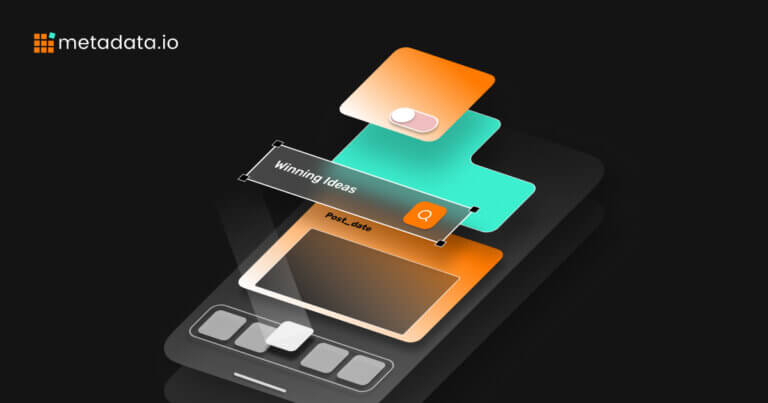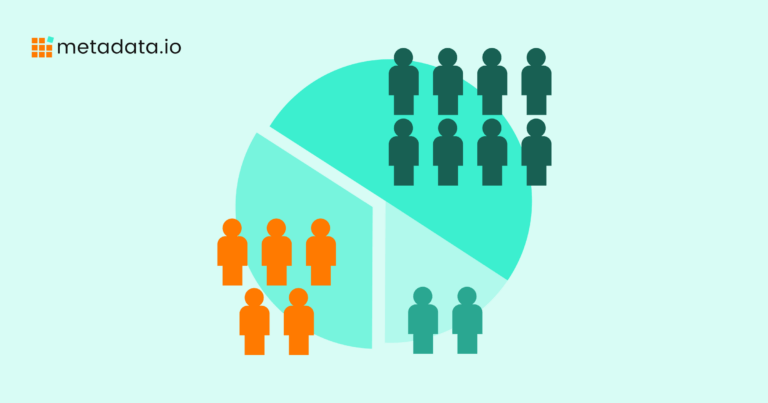How to Implement B2B Audience Segmentation Step-By-Step
B2B audience segmentation means dividing your broader market into smaller groups based on shared traits like company type, industry, size, and pain points.
By segmenting your market, you can craft messages that truly resonate and pinpoint profitable segments, boost engagement, and cut down on wasted spending.
This article will break down the criteria to consider while implementing B2B audience segmentation and explain how to do it step-by-step.
4 Criteria for B2B Audience Segmentation
To successfully segment a B2B audience, you need to create clear, well-defined groups based on their specific needs and priorities. Four common criteria include firmographics, technographics, behavioral data, and needs-based segmentation.
1. Firmographics
Firmographics classify businesses by attributes like industry, location, revenue, and growth trends. It’s similar to demographic segmentation in consumer markets but focuses on companies.
For instance, you might target financial firms with over 500 employees and annual revenues above $100 million. Firmographic data is relatively easy to gather, but remember: within any broad category, individual organizations may still have distinct needs.
2. Technographics
Technographics revolve around a company’s tech stack—from software tools to cloud platforms. When you understand which technologies a potential client already uses, you can suggest products that integrate seamlessly with their environment. This approach is especially effective for tech companies because it helps them adjust their pitch in a way that aligns with existing systems.
3. Behavioral Data
Behavioral segmentation examines how companies interact with your brand, through purchase histories, digital behavior, or product usage patterns. Behavioral insights highlight high-value leads, guiding you to craft messages that match their level of engagement.
For example, a firm that routinely downloads your whitepapers might benefit from being invited to an exclusive webinar.
4. Needs-Based Segmentation
Needs-based segmentation focuses on specific business problems and objectives. If you keep an eye on what drives business decisions, you can deliver solutions that truly solve their challenges. This approach goes beyond basic attributes, requiring open dialogue and careful listening to pinpoint each segment’s primary goals.
When you understand what a business truly needs, you can tailor your offerings to show real value, build stronger partnerships, and keep clients happy for the long run. This approach is at the heart of account-based marketing.
Step-by-Step Guide to Implementing B2B Audience Segmentation
B2B audience segmentation starts with thorough research, collecting the right data, and developing detailed customer personas. From there, you can shape your strategy, test, and adjust as needed.
Market Research
Market research is the foundational step in implementing B2B audience segmentation. Begin by thoroughly analyzing your current customer base to identify patterns and trends. Keep your CRM or database updated with the latest customer interactions and information; this data is invaluable for spotting emerging segments.
Engage in qualitative research by conducting interviews or surveys with your clients to gain deeper insights into their needs and challenges. If your products cater to a specialized industry, focus your research within that niche to understand its unique characteristics.
For broader markets, consider firmographics to group prospects by attributes like company size, revenue, sector, and geographic location. Firmographic segmentation is always reliable because companies don’t frequently change their fundamental attributes such as industry or organizational structure.
Data Collection
The first step is to collect firmographic data from reputable and up-to-date sources. Focus on key attributes such as industry sector, geographic location, company size, annual revenue, growth patterns, and legal status of potential clients. Utilize tools like company databases, industry reports, and business intelligence platforms to compile this information.
Then, collect technographic data to understand the technology stack of your prospects, and behavioral data to analyze their interactions with your brand. Ensure that the data you collect is accurate and compliant with privacy regulations.
You can gather technographic and behavioral data in a variety of ways.
Technographic data can be collected by using website analytics tools and IP tracking software to identify the technologies used by visitors to your website. Additionally, you can leverage data enrichment services that provide technographic data based on company websites and other publicly available information.
Businesses gather behavioral data by using website analytics tools to track user behavior on their website, such as pages visited, time spent on each page, and links clicked. You can also use marketing automation tools to track email opens, clicks, and form submissions. Additionally, you can implement social media monitoring tools to track mentions of your brand and engagement with your social media posts.
Create Customer Personas
Creating detailed customer personas means translating raw data into actionable insights for your B2B audience segmentation. Customer personas are fictional, yet realistic, representations of your ideal customers within each segment.
Begin by analyzing the collected data to identify common roles, responsibilities, and challenges faced by decision-makers in each segment. Develop profiles that include information such as job titles, typical day-to-day activities, pain points, goals, preferred communication channels, and purchasing behaviors.
These personas serve as a guiding compass for your marketing strategies, so that all messaging, content, and outreach efforts are tailored to address the specific needs and motivations of each group.
Strategy Development
Armed with detailed customer personas, proceed to develop tailored marketing strategies that directly address the unique pain points and motivations of each segment.
Map out the customer journey for each persona, identifying key touchpoints where your marketing efforts can have the greatest impact. Craft personalized content that speaks to their specific challenges and offers tangible solutions. This may include creating targeted blog posts, whitepapers, webinars, and case studies that highlight how your product or service meets their needs.
Design specialized email sequences with messaging that aligns with each persona’s interests and stage in the buying process. Choose the most effective communication channels for each segment, whether it’s email, social media platforms, industry forums, or direct outreach. Implement A/B and multivariate testing to experiment with different messages, formats, and calls-to-action, allowing you to refine your approach based on data-driven insights.
Ongoing Evaluation
Your industry and audience aren’t static, so your segmentation strategy must adapt accordingly. Regularly monitor key performance indicators such as conversion rates, engagement metrics, customer retention, and overall sales growth for each segment.
Use analytics tools to gain insights into how different segments are interacting with your marketing campaigns and adjust your tactics based on this data. If you notice that certain segments are underperforming or not responding as expected, revisit your initial assumptions and consider conducting additional research or refreshing your data sources.
Engage with your sales and customer service teams to gather qualitative feedback from interactions with clients. Establish a real-time feedback loop that allows for swift adjustments to your segmentation approach in response to market shifts, emerging trends, or changes within your target industries.
What are Common Challenges in B2B Audience Segmentation?
Segmentation isn’t always straightforward. Inaccurate data is a common issue as it causes you to target the wrong groups and drains resources. Confirm details through multiple sources and keep databases updated to avoid this pitfall.
Because B2B buying processes involve multiple stakeholders with varying agendas, segmentation can get tricky. If Company A has four decision-makers in IT, and Company B has three in finance, both sets of concerns need attention. This can be hard to achieve with limited resources.
Overlapping segments can also weaken results. Each segment should have distinct traits that justify separate strategies. Clarify what sets one group apart—whether it’s budget, growth stage, or tech stack. Prioritize segments based on revenue potential or alignment with overall business goals.
How Automation Can Help With B2B Audience Segmentation
Automation makes B2B audience segmentation more efficient, accurate, and scalable. Instead of relying on manual research and guesswork, marketers can use automation tools to categorize audiences based on behavior, firmographics, and engagement history.
Here’s how to make the most of it:
- Use Behavioral Data for Smarter Segments
Tracking website visits, email interactions, and content engagement helps create segments based on real behavior. Instead of grouping prospects by industry alone, automation tools can refine targeting by identifying users who repeatedly engage with certain topics. - Score Leads Automatically
Lead scoring assigns value to prospects based on their activity and fit. Instead of sorting through lists manually, use automation to prioritize leads who visit pricing pages, open emails frequently, or attend webinars. A well-structured lead scoring system helps sales teams focus on the most promising prospects. - Refine Messaging With AI-Driven Insights
AI-powered tools analyze past interactions to recommend the best content and messaging for each segment. If a group engages with thought leadership articles, nurture them with industry insights. If another segment interacts more with case studies, focus on proof-driven content. - Keep Data Clean and Updated
Outdated or incomplete data can weaken segmentation. Automation tools help by regularly validating and enriching data, ensuring you’re targeting the right contacts with the right information. - Test and Optimize Automatically
Running A/B tests manually is time-consuming. Automation tools can continuously test subject lines, content formats, and ad creatives, helping refine audience targeting without constant manual adjustments.
Use Metadata to Elevate Audience Segmentation
Reaching the right B2B audience starts with understanding their decision-making process, challenges, and goals. Automation and data-driven targeting refine segmentation by identifying high-intent buyers, personalizing messaging, and optimizing outreach across multiple channels. Strong buyer personas, the right platforms, and continuous testing keep campaigns effective and aligned with business objectives.
Metadata takes this process further by automating audience targeting at scale. Our AI-driven platform eliminates guesswork, so your ads reach the most relevant decision-makers without manual adjustments. From dynamic segmentation to predictive lead scoring, Metadata helps B2B marketers drive better results with less effort.
Ready to streamline your audience targeting? Learn how Metadata can sharpen your segmentation and boost campaign performance by booking a demo.


